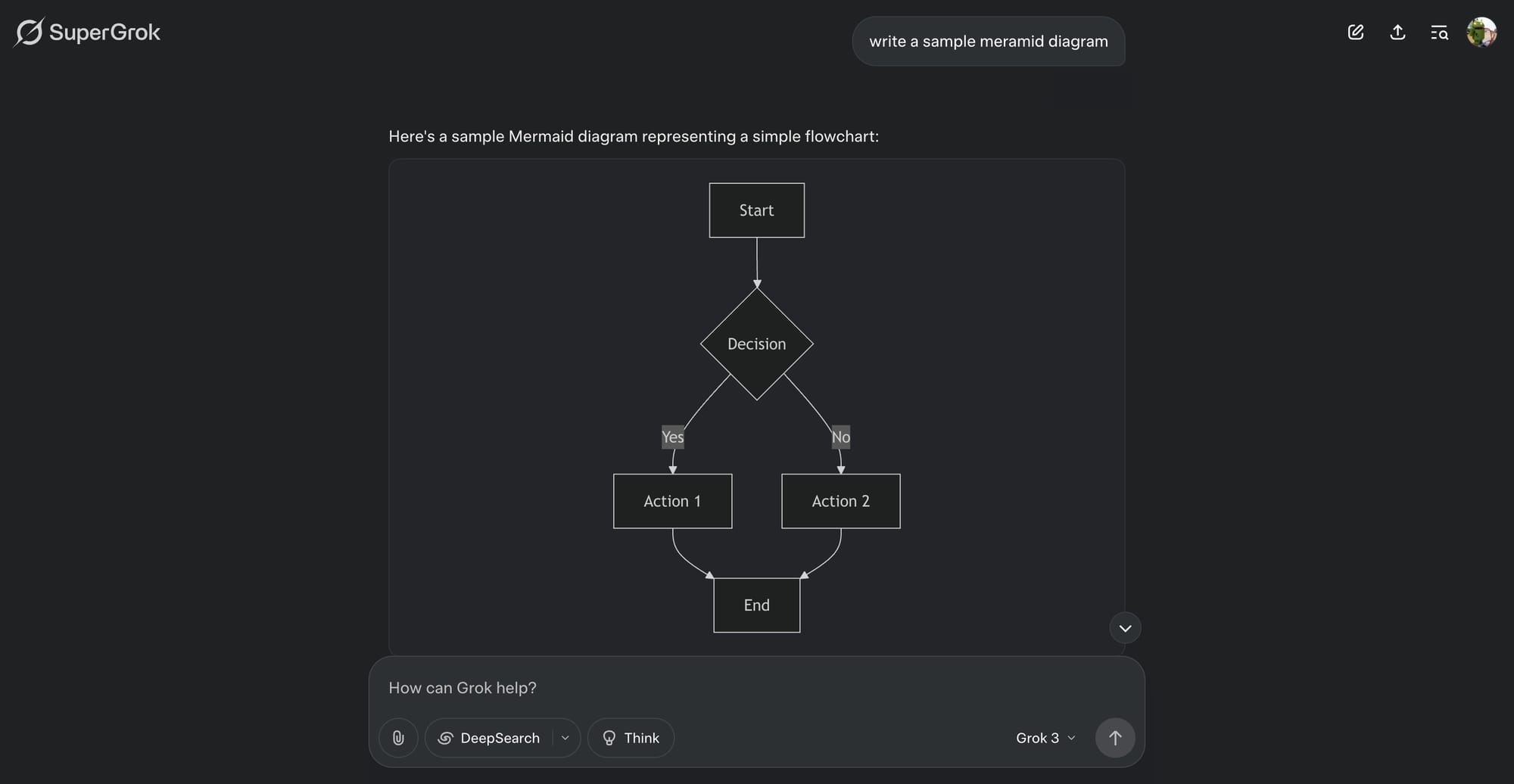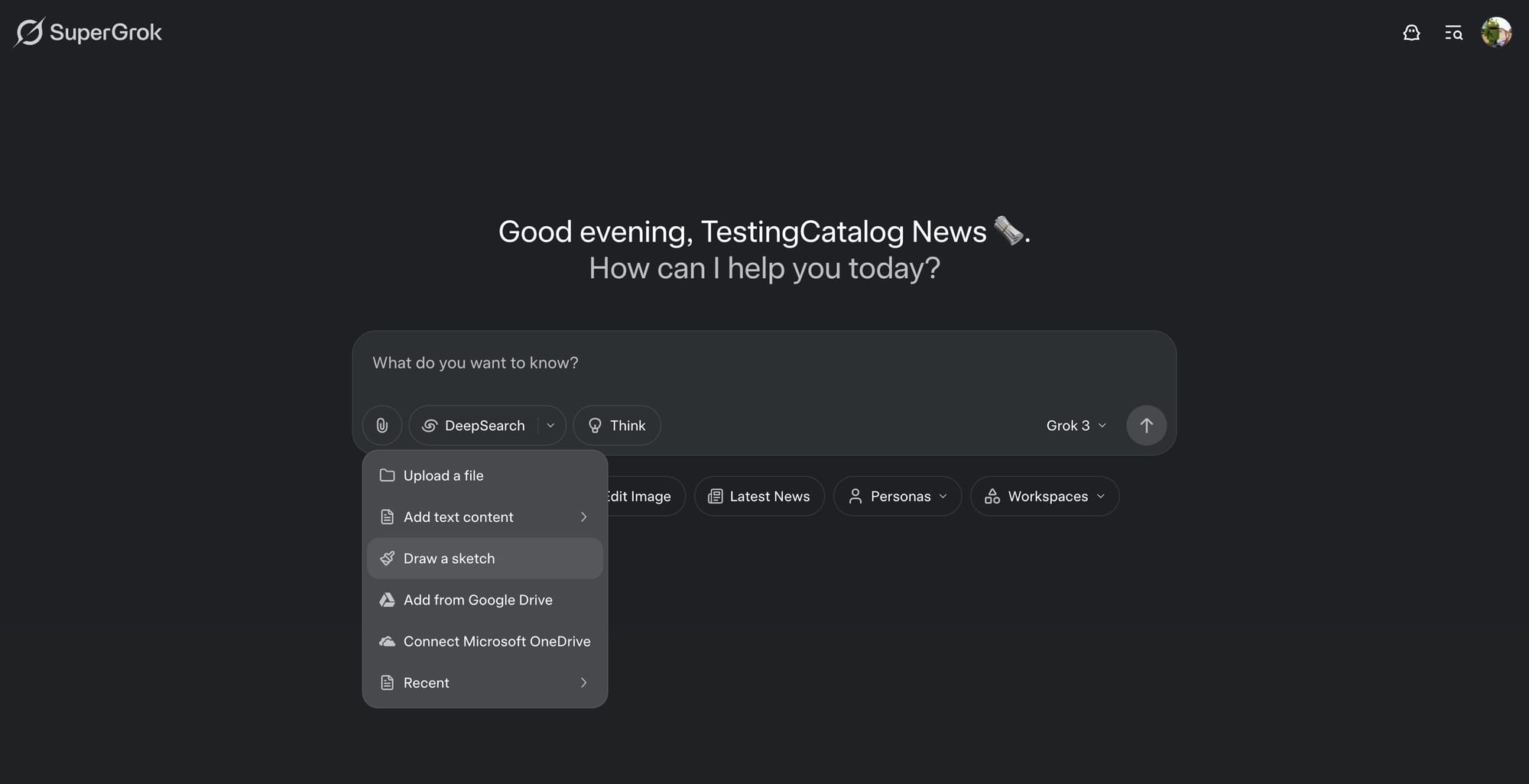xAI continues to expand Grok’s capabilities on the web, and the latest addition is a feature called Sketchpad, allowing users to submit hand-drawn input directly into a conversation. This visual input is passed to Grok as an image, enabling it to interpret sketches through its image understanding abilities. While other AI platforms like ChatGPT and Gemini have supported image uploads for similar purposes, Grok introduces a more integrated approach by embedding drawing directly into the interface, reducing friction for exploratory or diagram-based tasks.
Grok on the web will get Sketchpad! There, you can draw something and submit it as input.
— TestingCatalog News 🗞 (@testingcatalog) May 16, 2025
This is quite unique 👀 pic.twitter.com/3OkNgBqGP4
This feature pairs well with another upcoming update: native support for Mermaid diagrams. Mermaid is a lightweight syntax for creating flowcharts and similar visuals, often used in documentation and software planning. While both Grok and ChatGPT already support canvas-based rendering of such diagrams, Grok’s implementation appears to streamline the process. Instead of requiring users to manually generate the code and then render it on a separate canvas, Grok is designed to handle this inline, allowing users to describe a flow, have the Mermaid code generated, and see it visualized immediately.

These upgrades reflect xAI’s move toward reducing intermediary steps in technical workflows. Whether sketching a rough architecture or describing a process flow in words, users can now expect Grok to produce and display structured visuals natively.
You can now generate images in your desired aspect ratio in Grok! pic.twitter.com/R1qQh5Zncz
— Minxuan Xie (@MichelleShieh) May 16, 2025
This progression helps differentiate Grok as a more fluid interface for hybrid visual and textual reasoning, particularly useful for users working across development, planning, and educational tasks.






